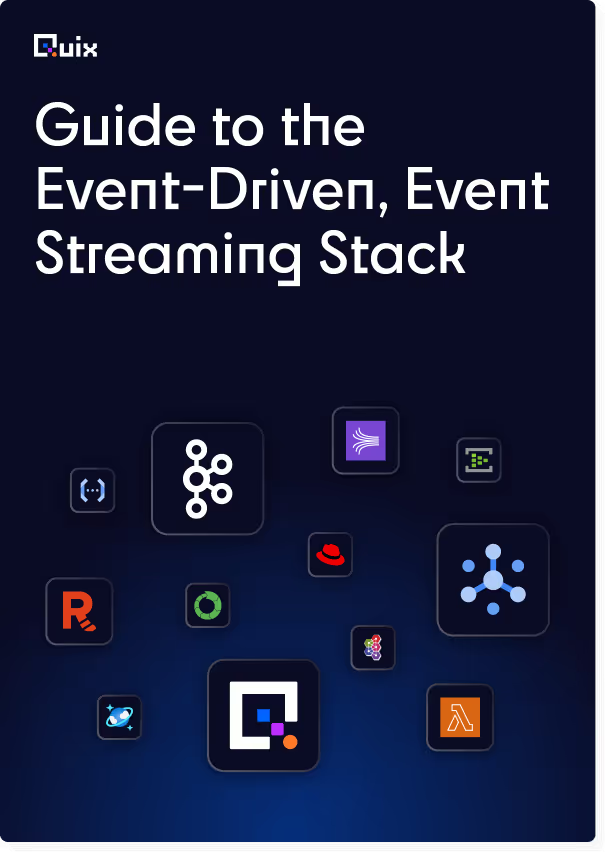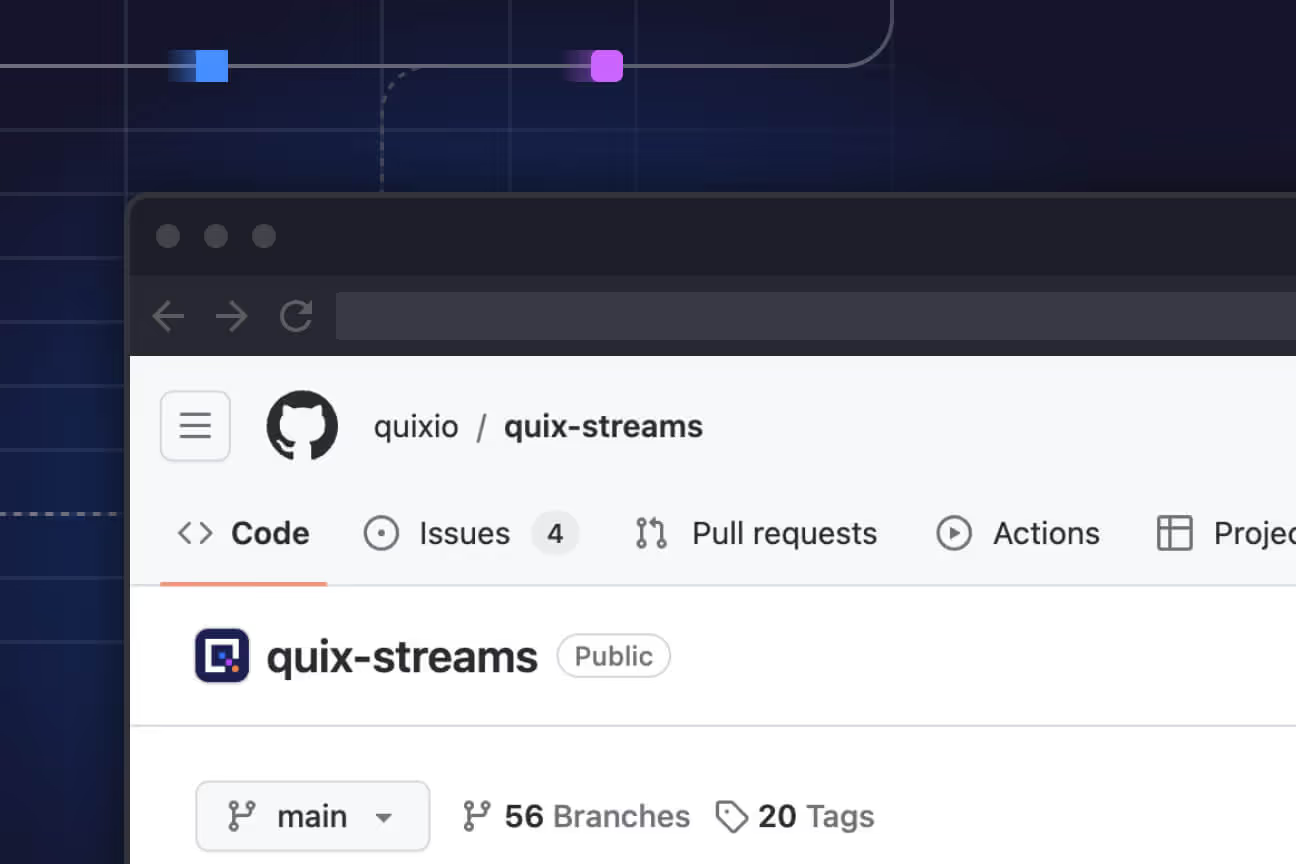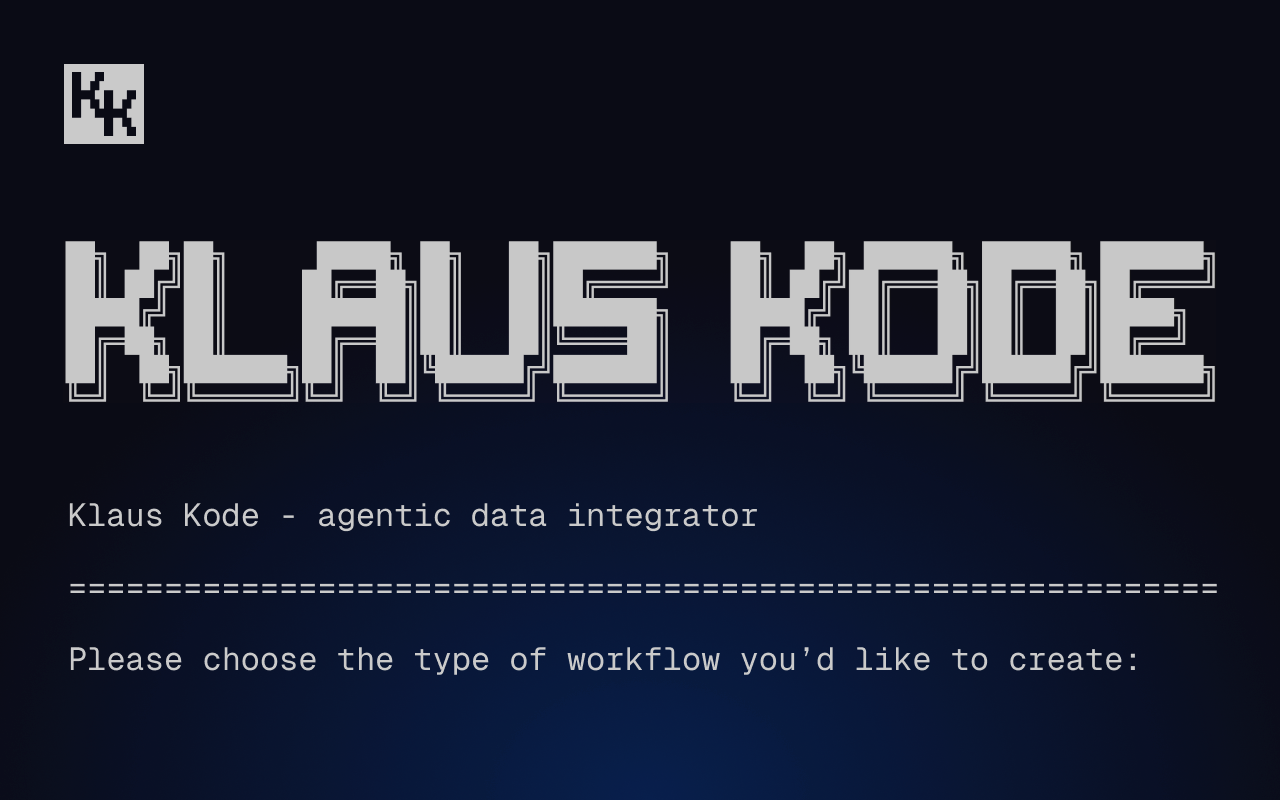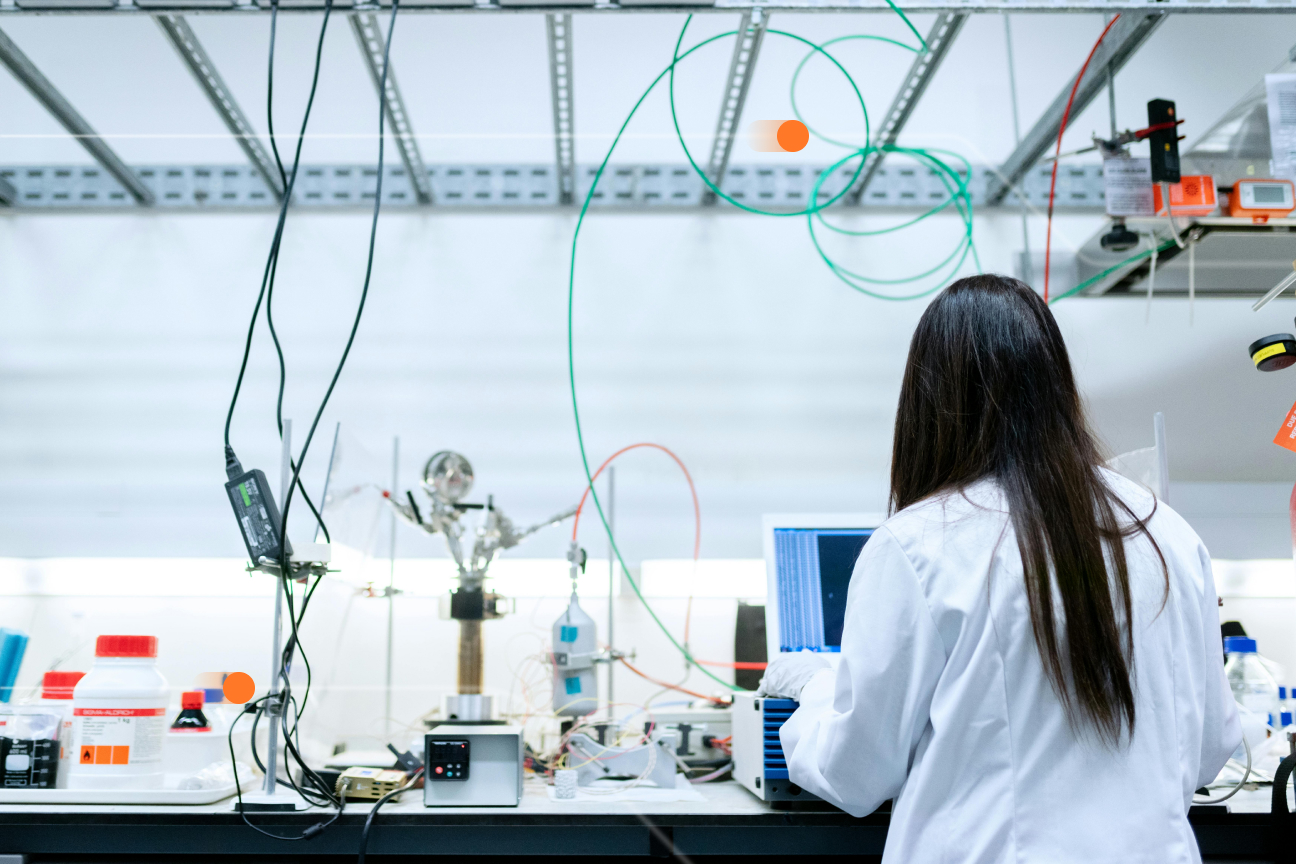Telemetry data explained
Gain a thorough understanding of telemetry data and how it works, learn about its benefits, challenges, and applications across different industries, and discover technologies you can use to operationalize telemetry.

What is telemetry data?
Telemetry refers to measuring, collecting, and transmitting data from remote or inaccessible devices, systems, or environments to another remote location. Telemetry typically involves using sensors or monitoring equipment to automatically measure and gather data, which is then sent to a system in a different place for processing, storage, and analysis.
Why does telemetry data matter?
Telemetry data is akin to a patient’s vital signs. Doctors rely on metrics like heart rate, blood pressure, body temperature, and oxygen levels to diagnose and monitor their patients, detect anomalies, and quickly react if they are in danger. Similarly, organizations depend on telemetry data to monitor and gain insights into the health of their systems and processes, detect and diagnose issues, optimize performance, and make informed decisions.
A brief history of telemetry
Telemetry is by no means a new concept. Some trace its origins back to the Steam Age, when the mercury pressure gauge was invented, allowing engine conductors to monitor the pressure in Watt steam engines from a near distance. In the early 20th century, telemetry systems were first employed to monitor electric power distribution. Throughout the latter half of the 20th century, telemetry systems evolved further and found applications in other industries. For example, they were used for monitoring and controlling processes in sectors such as oil, gas, and manufacturing.
Thanks to constant advances in wireless communication and data transmission and processing, telemetry systems have become increasingly sophisticated. The emergence of technologies like computers, the internet, and IoT devices means we now live in an interconnected world where telemetry is ubiquitous.
Today, collecting, processing, and analyzing telemetry data is vital across a wide range of fields and industries, including healthcare, manufacturing, automotive, transportation, environmental monitoring, meteorology, space exploration, agriculture, software development, transportation, and infrastructure management. Organizations everywhere rely on telemetry data to extract actionable insights, make data-driven decisions, and improve operational efficiency.
Telemetry data types
When handling telemetry, software developers and data teams usually have to deal with the following types of data:
- Time series sensor data, such as temperature readings collected every minute from a network of IoT sensors deployed in a smart building.
- Audio and video data collected, for example, from surveillance cameras.
- Light detection and ranging (LiDAR) data providing detailed spatial information about objects or the environment.
- Clickstream data that records user interactions, behaviors, clicks, and navigation in web and mobile apps.
- Event data, trace data, metrics, and logs, which are commonly used for software and network observability purposes.
- Business logic data. As an example, in the case of an e-commerce platform, this may include order placements, payment verifications, inventory updates, and shipping notifications.
- Application layer data like application response times and latency measurements.
- Infrastructure layer data such as network bandwidth usage, packet loss, and CPU usage metrics.
How does telemetry work?
The process of working with telemetry data involves a few key steps:
- Collecting and transmitting data
- Processing and storing data
- Analyzing data

1. Collecting and transmitting telemetry data
Collecting and transmitting telemetry data involves using sensors to monitor an environment, system, or location of interest. It’s important to note that sensors can take different forms. They can be physical devices (for example, a temperature or a pressure sensor). Or they can be software-based agents and modules, such as a network traffic sensor, or a telemetry service embedded in an operating system.
These sensors are configured to collect data generated by the environment or system they are monitoring. Depending on the use case, this can include measurements such as temperature, pressure, humidity, voltage, network traffic, clickstream data, etc. Telemetry data may be collected at regular intervals or in real time.
Once captured by sensors, telemetry data is then transmitted to a central or remote system for storage and processing. The transmission can be done using various communication technologies. Examples include wired connections (like Ethernet), wireless technologies (such as infrared systems, Bluetooth, and radio), and cellular and computer networks.
2. Processing and storing telemetry data
After telemetry data has been transmitted to the central system, it needs to be processed. This is necessary because most telemetry data transferred by sensors is raw, unstructured, and hard to analyze.
Processing telemetry data might involve steps like:
- Data cleaning - removing or correcting inconsistencies, filling missing values, and handling anomalies to ensure data quality.
- Data transformation - converting data formats, normalizing or standardizing values, or applying mathematical or statistical transformations.
- Data integration - combining data from different sources or sensors to create a unified dataset.
Once processed, telemetry data is structured, which makes it easier to analyze.

Processing (transforming and merging) unstructured telemetry information, so it becomes structured data, which is easier to store and analyze.
Another thing to ponder is where to store the data. Telemetry data can be kept in databases, data lakes, data warehouses, or cloud storage solutions. Storing telemetry data enables organizations to analyze past data and identify patterns, trends, or anomalies that can provide insights into system performance, user behavior, or operational efficiency.
Whether you process telemetry data first and then store it or vice-versa depends on the specifics of your use case. The "store first, process later" approach is commonly used in batch processing scenarios, where data is collected and stored in raw form without immediate processing. Collected data is then processed later, at scheduled intervals.
On the other hand, the "process first, store later" approach is often used in real-time processing scenarios. For example, if you’re monitoring critical systems, telemetry data needs to be processed as soon as it’s ingested so that you can make in-the-moment decisions based on the most recent information available. Processed data can then be stored for future reference and further analysis.
3. Analyzing telemetry data
Analyzing telemetry involves exploring and interpreting processed data to gain insights, detect anomalies, and identify patterns and trends. Typical data analysis tasks include statistical analysis, correlation analysis, data mining, machine learning (ML), time series analysis, and predictive modeling.
Data visualization techniques are frequently used to present telemetry data in a visually appealing format. Charts, graphs, dashboards, and plots communicate complex data relationships and data-driven insights in a way that is easy to understand and reason about.
For example, the image below shows a dashboard that displays telemetry data collected from a mobile device, together with the timestamp of any crash (accident) event.

How to use telemetry data?
The primary purpose of collecting, processing, and analyzing telemetry data is to obtain actionable insights. Telemetry data can be acted upon to achieve specific goals or tackle specific challenges. For example, telemetry data empowers us to optimize the performance of systems, improve user experiences, streamline processes, enhance security measures, and even drive business and revenue growth.
Real-time vs. historical telemetry data
Collecting and batch processing data was the standard way of managing telemetry for a long time. Batch processing was (and continues to be) a viable option for scenarios where immediate analysis is not required. For example, if you wanted to identify patterns in energy consumption at a factory, you would collect historical data, store it, and analyze it in large batches.
However, for many telemetry use cases, batch processing is too slow. For instance, if your goal is to detect equipment malfunctions or potential failures as soon as they happen, you need the ability to collect, process, and analyze telemetry data in real time. It’s the only way you can perform timely maintenance interventions and reduce downtime.
The emergence of data streaming and stream processing technologies in the past decade has enabled more companies to analyze telemetry data in real time.
Not only do streaming and stream processing technologies allow you to process and analyze data in real time, but they offer additional benefits, such as:
- Reduced data storage costs. Stream processing technologies enable you to process data “in-memory”, as soon as it becomes available. This way, you can reduce your reliance on data storage and decrease compute costs. In comparison, with batch processing, you frequently have to store unstructured telemetry information you’ve gathered from sources, then process it, and then store it again, as structured data.
- Scalability and reliability. Take, for example, Apache Kafka, a distributed streaming platform that’s widely used for building real-time telemetry data pipelines and streaming applications. Kafka is designed to handle high-throughput, fault-tolerant, and scalable data streams, making it ideal for processing large volumes of high-frequency data in real time.
By using data streaming and stream processing technologies when dealing with telemetry data, organizations can gain real-time insights, enhance monitoring capabilities and situational awareness, and enable faster and more proactive decision-making based on up-to-date information.
That’s not to say that batch processing is outdated or obsolete — it’s a perfectly valid option if there’s no urgency to analyze data as soon as you collect it. Leveraging a streaming architecture means you can actually benefit from both real-time stream processing and batch processing. For example, you could use a streaming solution like Kafka or Amazon Kinesis to ingest streams of telemetry data and process them on the fly, in real time. Processed data can then be consumed immediately by downstream systems, apps, and ML models to extract real-time insights.
In addition, tools like Kafka and Amazon Kinesis offer connectors (integrations) that allow you to move streams of telemetry data (processed or raw) to various databases and data warehouses for long-term storage and batch analytics.

To learn more about the example depicted above and how you can use a streaming architecture for both stream processing and batch processing, read this article.
Real-time telemetry data is a game-changer for businesses
Businesses everywhere tap into the power of real-time telemetry data to achieve remarkable outcomes and gain a competitive edge. Here are a few examples to help put things into perspective:
- Amazon leverages telemetry to optimize its supply chain operations in real time. The organization analyzes telemetry data on package movement, inventory levels, and transportation logistics to streamline processes, enhance efficiency, and ensure timely deliveries.
- Google relies heavily on real-time telemetry data to deliver relevant search results and targeted advertisements. They analyze user behavior, search patterns, and click-through rates to refine their algorithms, improve ad targeting, and provide more accurate and helpful search results.
- Fitbit collects real-time telemetry data from its wearable fitness devices, tracking metrics such as heart rate, sleep patterns, and activity levels. This data enables Fitbit users to monitor their health and fitness progress, set goals, and make informed decisions about their well-being.
- Control Ltd. supplies racing teams and manufacturers with race-winning telemetry solutions. The company uses machine learning models to automate the configuration of IoT telemetry devices in cars, monitor real-time network performance, and optimize connectivity for seamless data transfer during races.
- CloudNC capitalizes on telemetry to enhance its manufacturing operations. The organization uses high-frequency time series telemetry data to optimize production efficiency, update factory schedules based on machine performance, make better predictions for maintenance, and detect any issues in production lines as soon as they occur, in real time.
Telemetry data use cases
In addition to the examples presented in the previous section, telemetry data has broad applications across various other industries and disciplines:
Telemetry data technologies
There are numerous tools available that can help you work with telemetry data. We’d need a whole book to cover all of them; for brevity, the table below only lists some of the most popular, commonly-used ones.
Benefits of telemetry data
Telemetry data offers a multitude of advantages, transforming and improving the way organizations and individuals operate and make decisions. Here are the key benefits of telemetry data:
- Real-time visibility. Telemetry allows you to continuously track and analyze critical metrics, performance data, and operational data, providing instant visibility into the health and status of systems, devices, equipment, operations, and processes.
- Proactive issue detection and resolution. Telemetry data helps you to identify anomalies, deviations, or patterns that indicate potential issues or failures before they escalate. This enables proactive measures to be taken, such as triggering alerts, initiating automated actions, or performing preventive maintenance.
- Improved decision-making. By analyzing telemetry data, stakeholders can make better and faster data-driven decisions.
- Enhanced end user experience and increased revenue. Telemetry data is often used to understand user behavior, preferences, and usage patterns. This knowledge serves as a foundation for personalizing user experiences, optimizing user interfaces, and delivering targeted content or recommendations. This way, you can improve user satisfaction and engagement and increase revenue.
- Decreased costs and better resource planning. By analyzing telemetry data, businesses are empowered to more easily identify inefficiencies, optimize resource utilization, and streamline operations in a cost-effective manner.
- Continuous improvement and innovation. Telemetry data facilitates a feedback loop for continuous improvement. Organizations can iterate and refine their systems, processes, and products by analyzing and monitoring telemetry data, thus driving innovation and staying ahead of the competition.
Challenges of working with telemetry data
While telemetry brings plenty of benefits to the table, it also comes with a host of challenges. Here are the main ones:
- High data volume and frequency. Telemetry data is often generated at high volumes and with high velocity. Managing and processing a telemetry data stream requires efficient and scalable data storage, processing, and analysis techniques.
- Complex and varied data. Telemetry data comes in diverse formats and structures. Integrating and analyzing data collected from different sources can be tricky, requiring normalization and transformation to derive meaningful insights.
- Poor data quality. Telemetry data often comes with missing values and inconsistencies. Pre-processing techniques such as data cleaning, outlier detection, and imputation may be necessary to address data quality issues.
- Processing and analysis complexity. Processing and analyzing data in real time is often crucial when working with telemetry. However, building such capabilities in-house is expensive and complicated. Domain-specific knowledge and expertise and a significant financial and time investment are required. See, for example, how hard it is to scale stream processing infrastructure to deal with vast volumes of telemetry data. Or learn about the challenges of handling streaming telemetry data.
- Data governance and compliance. Handling telemetry data needs to comply with regulatory requirements and data governance policies. It’s essential to ensure that consent, retention, and protection measures are in place.
- Security and privacy. Ensuring data security and privacy is vital to protect against unauthorized access, data breaches, or privacy violations. Implementing secure data transmission, access controls, and data anonymization techniques are critical considerations for any telemetry system.
Harness the power of telemetry data with Quix
Telemetry data is a vital component in the modern technological landscape, opening up new possibilities for industries across the board. With telemetry data, businesses can gain valuable insights, optimize operations, and make data-backed decisions to drive efficiency, growth, and increased revenue.
However, operationalizing telemetry data can be a daunting task. Building a scalable and reliable data platform that can extract business value from raw telemetry data in real time takes months (or even years) and legions of developers. Engineering such a solution in-house means integrating different components (e.g., event streaming and stream processing tools, databases, and machine learning frameworks) and ensuring they behave reliably.
Then there’s the challenge of ingesting telemetry data in different formats, from different sources, processing it, and storing it. Analyzing telemetry data, testing it, and deploying it to production add additional layers of complexity. All in all, building a system that allows data professionals to derive actionable insights from telemetry is like assembling a giant puzzle with thousands of pieces. It’s too easy for a piece to go astray.
And that’s where Quix comes in. Developed by McLaren Formula 1 engineers with extensive expertise in telemetry data, Quix is a full-stack (yet modular) Python stream processing platform. Quix minimizes the time and effort required to set up streaming and ML pipelines, making it easier and faster for data scientists and data platform teams to extract business value from real-time telemetry data.
With Quix by your side, you can:
- Use a serverless compute environment for hosting your web-based real-time streaming applications.
- Monitor the status and data flow of your streaming applications in real time.
- Benefit from a resilient and scalable broker infrastructure without the pain of managing it yourself (we provide an abstraction layer on top of Kafka topics).
- Ingest telemetry data from different sources, such as HTTP endpoints, MQTT topics, Twitter, and Netatmo devices.
- Process telemetry data in-memory, as soon as it’s collected, with up to nanosecond precision.
- Transform streaming data with Python, test with Git and CI/CD, and then serve data right back to production in real time.
- Place telemetry data in our time series database for long-term storage, analytics, and data science activities.
- Query historical telemetry data streams to train ML models and build dashboards.
- Push telemetry data to long-term storage solutions, including Amazon S3, Postgres, Snowflake, TimescaleDB, and BigQuery.
To learn more about Quix and how it empowers you to make the most of real-time telemetry data, browse our documentation and sign up for an account.

Check out the repo
Our Python client library is open source, and brings DataFrames and the Python ecosystem to stream processing.

Interested in Quix Cloud?
Take a look around and explore the features of our platform.

Interested in Quix Cloud?
Take a look around and explore the features of our platform.

.svg)







